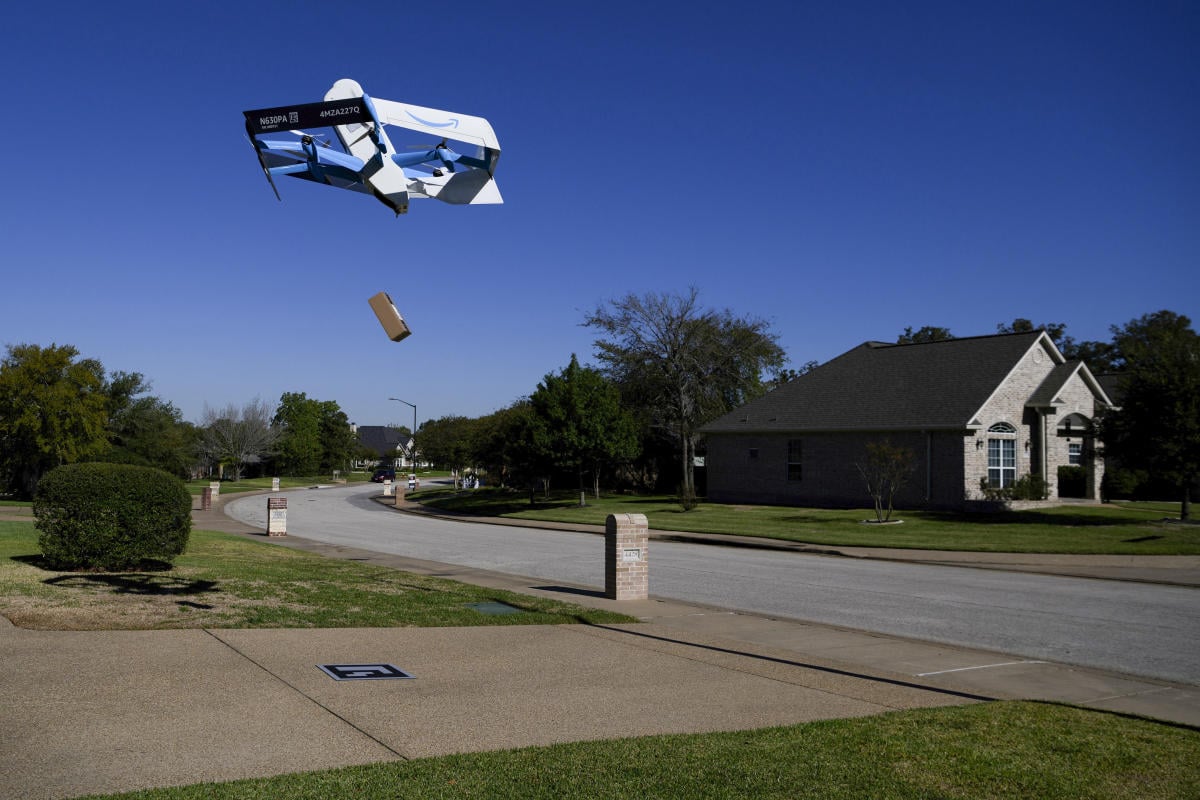Only one item can be delivered at a time. It can’t weigh more than 5 pounds. It can’t be too big. It can’t be something breakable, since the drone drops it from 12 feet. The drones can’t fly when it is too hot or too windy or too rainy.
You need to be home to put out the landing target and to make sure that a porch pirate doesn’t make off with your item or that it doesn’t roll into the street (which happened once to Lord and Silverman). But your car can’t be in the driveway. Letting the drone land in the backyard would avoid some of these problems, but not if there are trees.
Amazon has also warned customers that drone delivery is unavailable during periods of high demand for drone delivery.



The primary factor is probably air density. Hot air is less dense than cold air. Humid air is less dense than dry air. High altitude air is less dense than low altitude. Hot, humid, and high, an aircraft’s available payload could be a small fraction of its cold, dry, and sea level capacity.
The difference in air density from 0°C to 45°C is only around 20%. I can’t imagine that would be enough to cause problems, assuming the drones have a decent safety margin. I think it’s more likely it’s a safety precaution for the electronics.